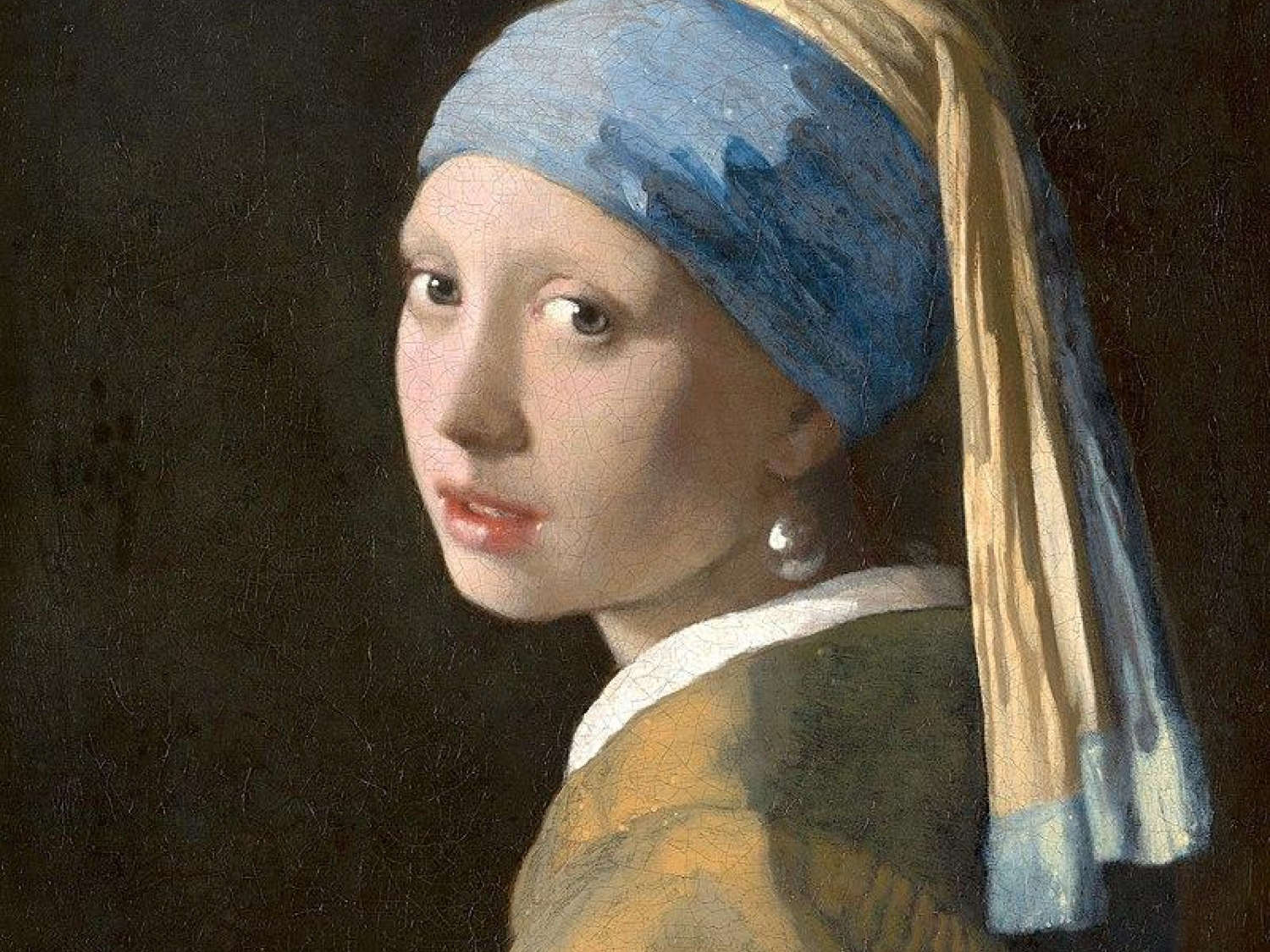This essay is written by art historian, curator, and writer based in Amsterdam Dr. Timea Andrea Lelik. She gives us an impressive look at celebrated Dutch artist Johannes Vermeer ahead of the special exhibit on Vermeer at the Rijksmuseum. Check out our free event and upcoming Vermeer seminars for more Context around this special event.
I always found it fascinating how many of Johannes Vermeer’s works from his modest oeuvre are in a profound search for stillness and awe for contemplation. For an artist with a household that must have known very few silent moments – with eleven children running around – stillness must have been a quality Vermeer greatly needed in his own life. It is therefore sensible to assume that the reason for which he decided to paint stillness and contemplation was specifically because he was trying to have more of them himself.
Besides the subjects he chose, even the manner he painted his canvases exudes stillness. In a career that lasted about twenty years, he painted only a handful of images, 37 that we know of today. Therefore, the paintings, as well as their creation process, required stillness and much contemplation. One of the main reasons for which Vermeer’s paintings still hold such immense fascination to the contemporary viewer is because we are also in the search of the same things. We might dream of success, fame, excitement, and adventure, but even though these might constitute the more exhilarating parts of life, without stillness and contemplation we can’t achieve much. It is in our moments of calm and quiet that our lives become fully apparent to us and we realize what we already have and need to appreciate more.
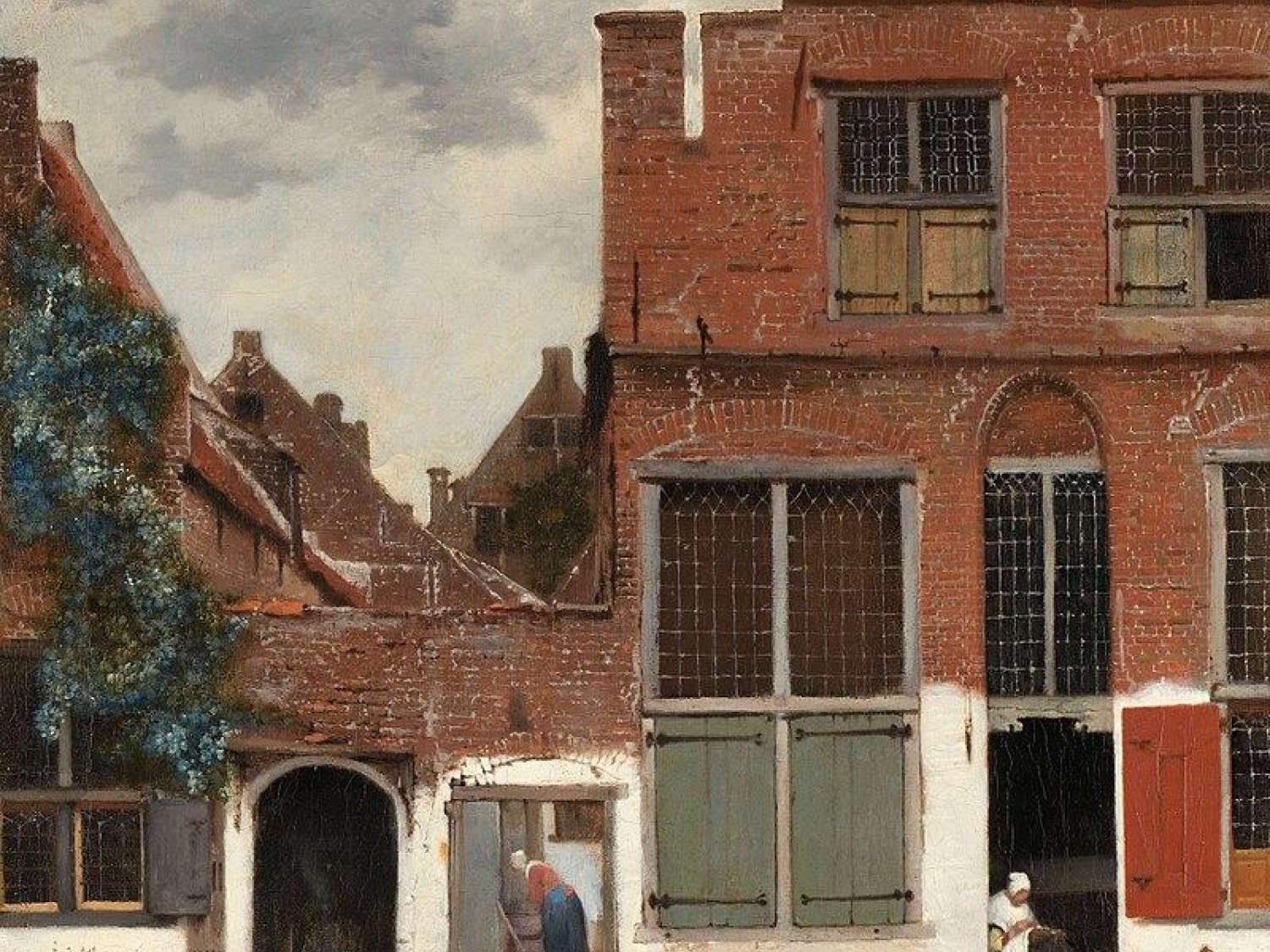
Vermeer lived in a busy city and likely had a frantic home, yet his paintings convey the opposite. His works are all calm and composed. The city of Delft was booming in Vermeer’s time, in a new found period of unprecedented wealth in the Dutch Republic. The city and its streets must have been bustling at the time, yet Vermeer chose to depict, in the only two outdoor paintings that he made, moments of utter stillness and calm. In the View of Delft, it’s still early in the morning, just after 7 am as indicated by the clock on the city wall. The weather isn’t particularly agreeable: neither overcast nor sunny, it is a moment in-between the two, where all possibilities are still open. This a moment of the day that seems to reflect the general mood of any ordinary day: neither too good nor too bad, but with enough potential to have it turn around for the better. Vermeer’s Little Street similarly shows no grand display of architecture, but rather the exterior of a typical Dutch house. People depicted in the painting just go about their everyday activities, watching the children and cleaning the yard. The scene becomes even more commonplace once we inspect it up close and notice see the cracks in the walls. Vermeer, instead of taking his artistic freedom to cover up such shortcomings, preferred to paint them, to further convey the beauty of imperfection and of the commonplace.
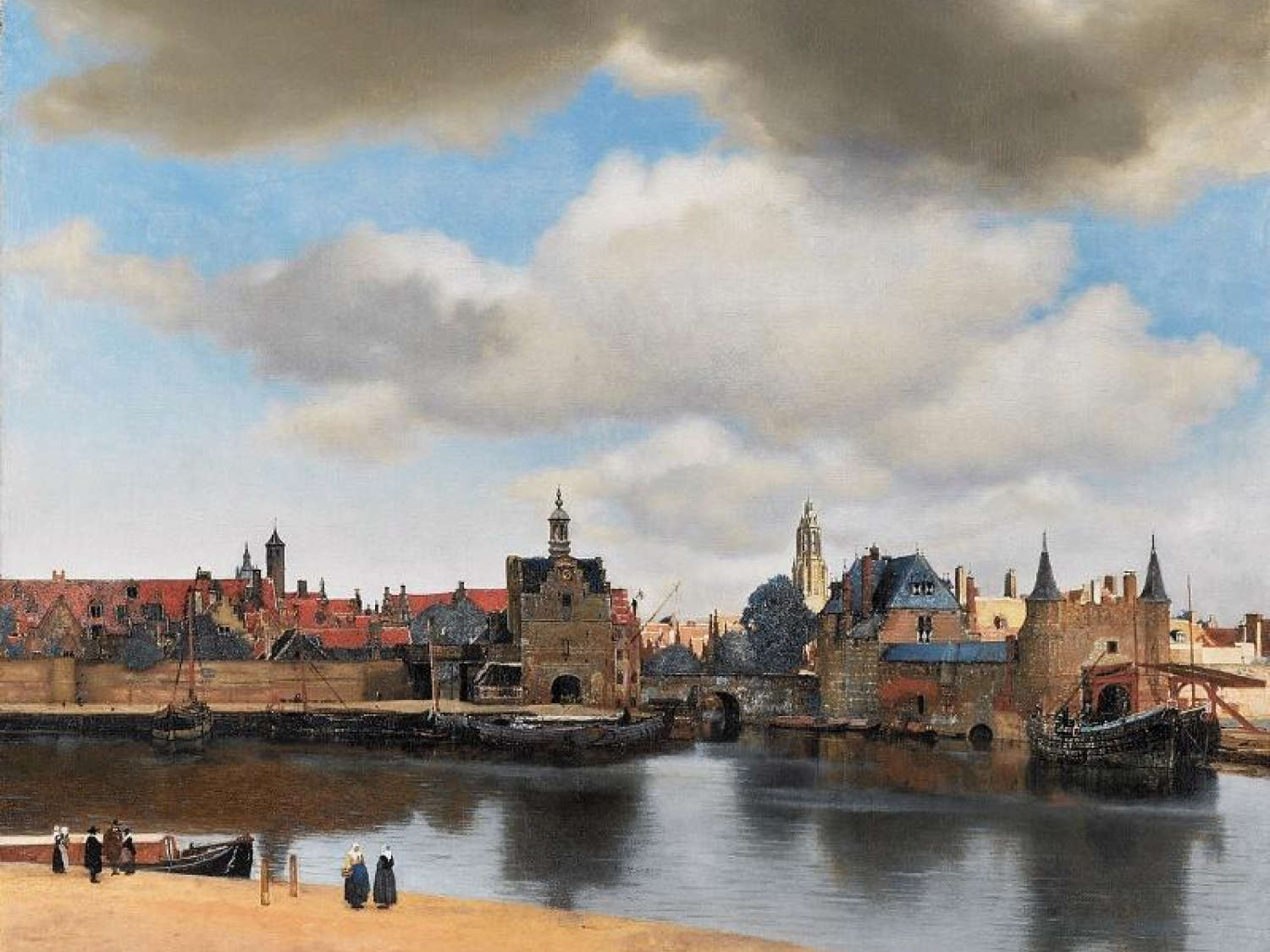
Vermeer’s works have a clear predilection towards interior scenes, the place where the painter probably spent most of his time. How did his days go by, it’s hard to say, as we know very little about his private life. But we might get a hint at how he envisioned significant parts of the day pass by: filled with moments of silence and contemplation. Many of his works depict women in small chambers, fully immersed in their activities. One of the most telling examples from his early works depicts a Girl Reading a Letter at an Open Window. The painting showed the girl reading in front of an empty wall for many centuries, but it has been recently unveiled that, in fact, there was a Cupid hanging behind her all along. The depiction of Cupid makes it clear that the girl is reading a love letter, yet we have difficulty knowing the content of the letter as the card held up by Cupid, which could indicate the nature of the letter, is covered by the trompe l’oeil curtain. Vermeer deliberately preferred to keep the mystery around the painting and the character depicted, in order to invite the viewer to observe the work for as long as the girl would be reading the letter. These types of compositions are open invitations of contemplation, showcasing transient moments of stillness and silence amid the chaos of everyday life.
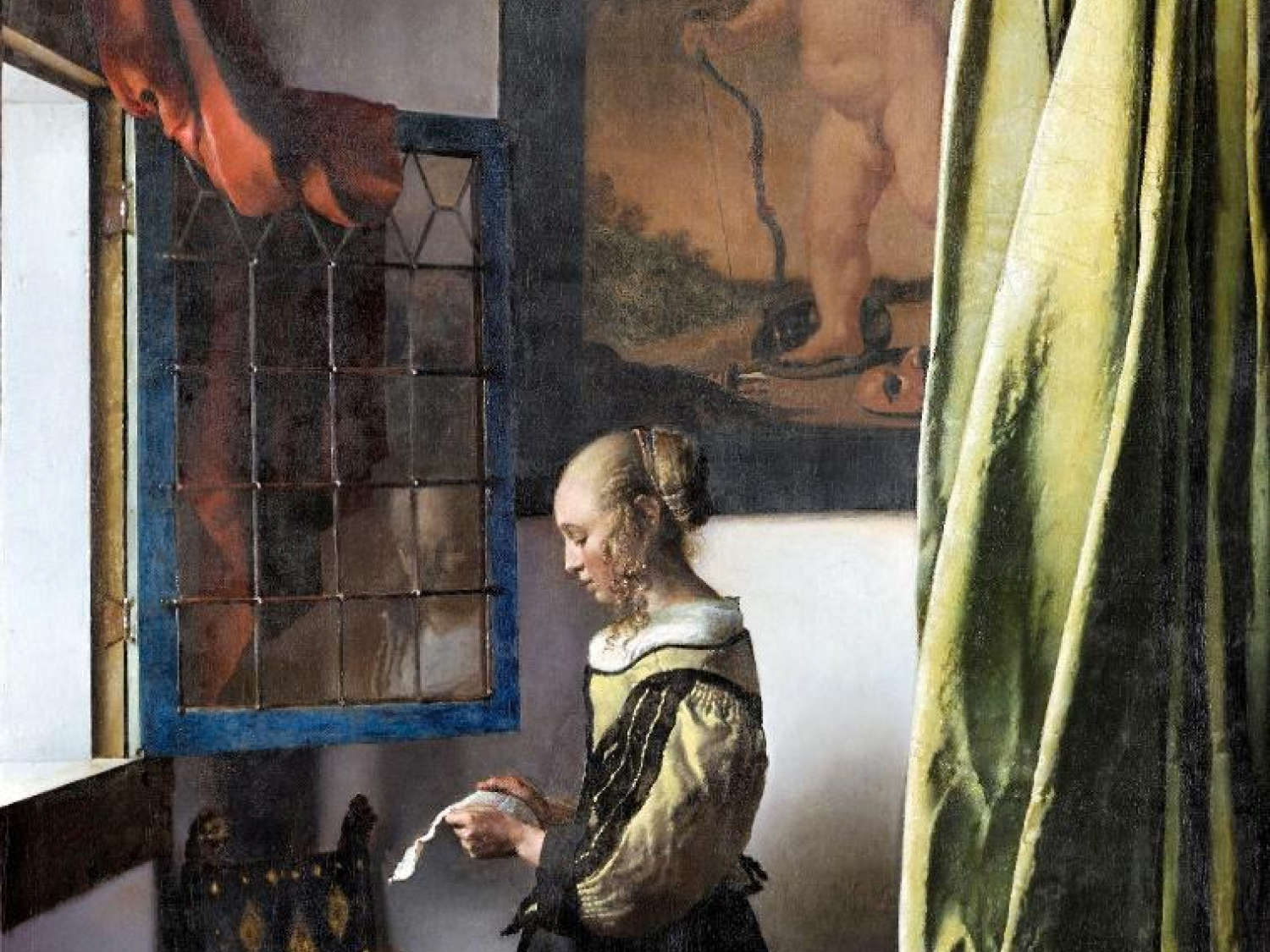
Vermeer’s search for stillness in single-character compositions culminated in his world-famous depiction of the Milkmaid, where he again deliberately chose to focus our attention solely on the girl pouring milk. The kitchen wall had initially more details: a jug rack on the wall and a basket on the floor. Yet Vermeer simplified the composition in order to orchestrate our attention towards the maid performing the very ordinary task of pouring milk. To emphasize the commonplace nature of this scene, Vermeer even decided to paint a small hole in the window – an imperfection that could have easily been covered with artistic liberties. Yet, he decided to paint this to emphasize the light that is pouring in through this tiny crack, silently explaining that small imperfections are in fact places where much (metaphorical) light can shine in. And we, the viewers, would not be able to notice these details should we not take the time to contemplate the works in stillness. What Vermeer is trying to teach us is that we should learn to be just as absorbed in our daily tasks as this maid is, as this way, the stillness which we so much cherish and desire, would visit us some more. And it is not the grandeur of the task that makes any mundane activity utterly special, but rather the manner we perform it has the capacity to transform our perception of this.
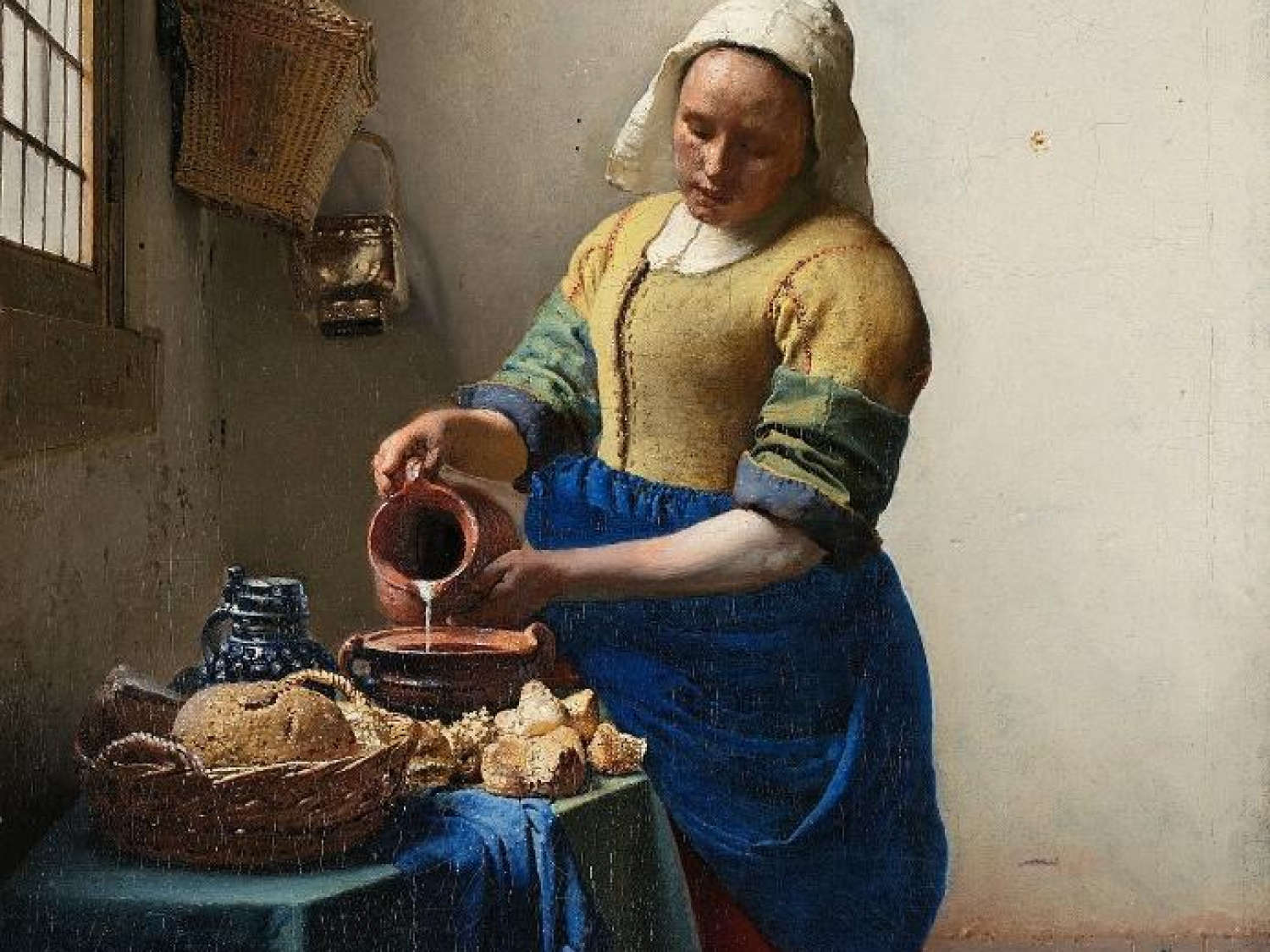
This perspective is further strengthened by Vermeer’s subjects fully focused on their everyday work, as seen in the Lacemaker. Many girls in the seventeenth century learned how to make lace, therefore the fact that Vermeer chose to paint a young lacemaker was not particularly remarkable. What is noteworthy though is the way he chose to paint her, in a close-up instead of a more conventional full-range portrait. In this manner, Vermeer draws us into the picture frame, in order to create intimacy between us and his model, to help us regain our focus and concentration, in a similar fashion to the person we are looking at. We are again invited to contemplate and appreciate the simplicity of the everyday task of lacemaking, where an unknown girl, fully immersed in her work, encourages us to share the same focus that she has for her work, which even though ordinary, is still very much dignifying and deserving of our attention.
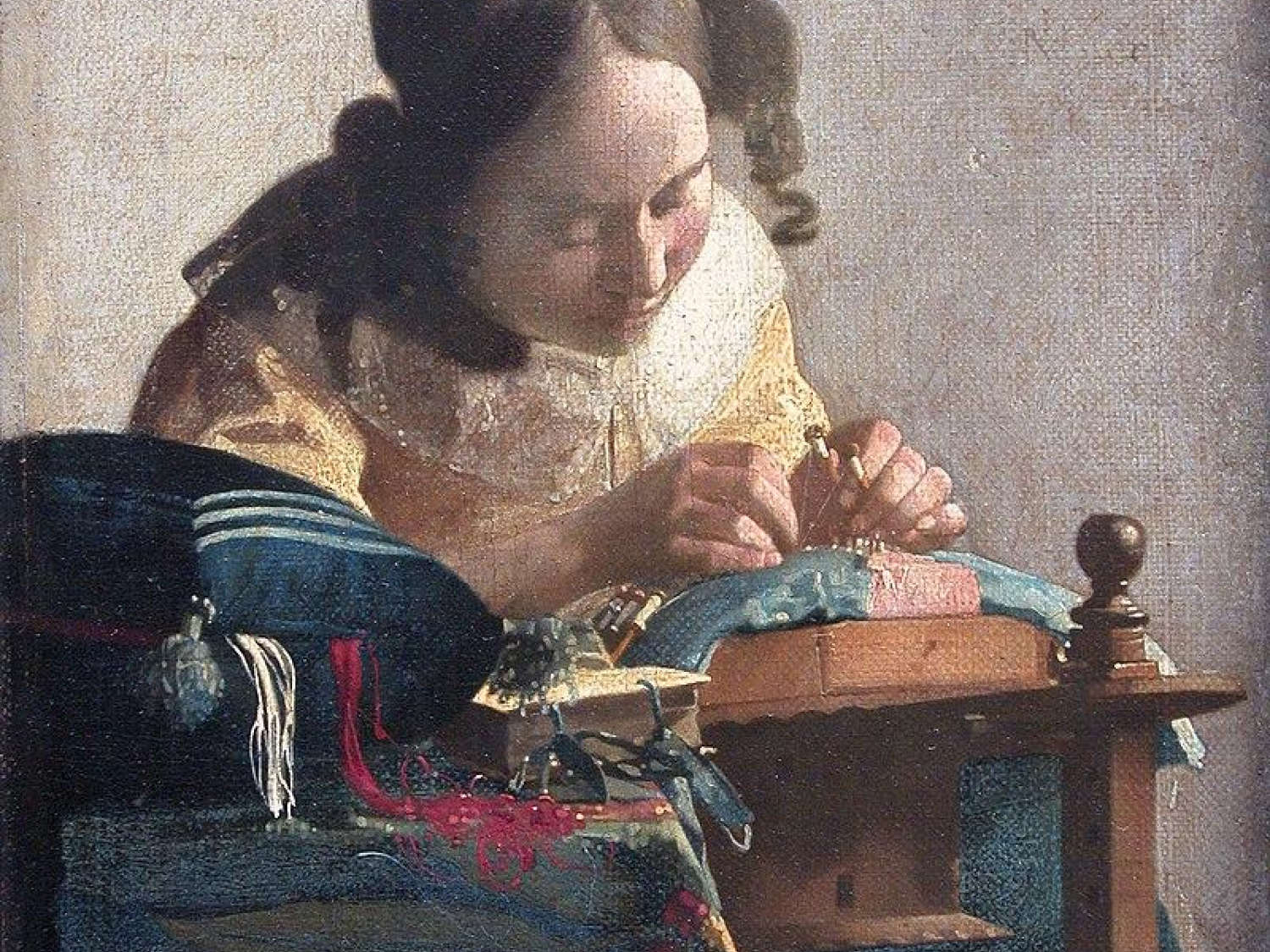
Another unknown, yet unquestionably famous girl, also situated on a neutral background, fully draws our attention with her mysterious gaze. Who is she, how is she, and what is she trying to say? Or is she even trying to speak? Vermeer’s subjects remain just as enigmatic as the artist himself. Even though we now know that these images of unknown women are tronies (not portraits of existing people, but studies of specific characters), knowing this does not make them in the least less fascinating. On the contrary, exactly because we do not know who they are – and because they could be anyone we image them to be – that we are so fascinated with these images and drawn into their mystery, leaving us deeply captivated in a short moment of silence and contemplation.
